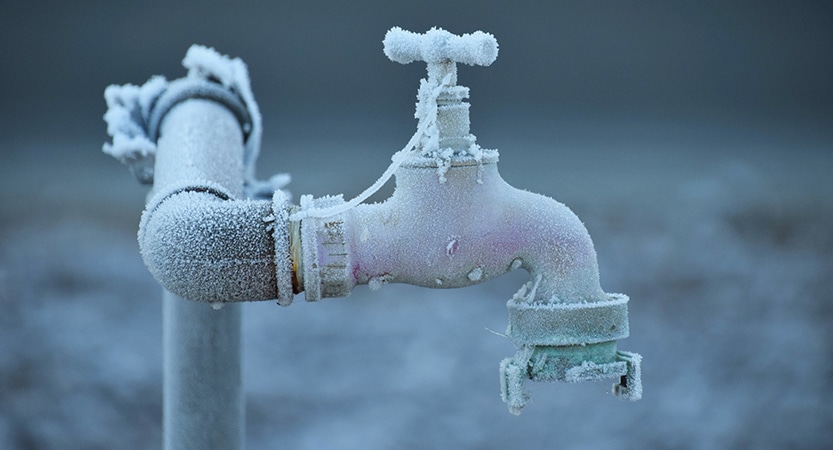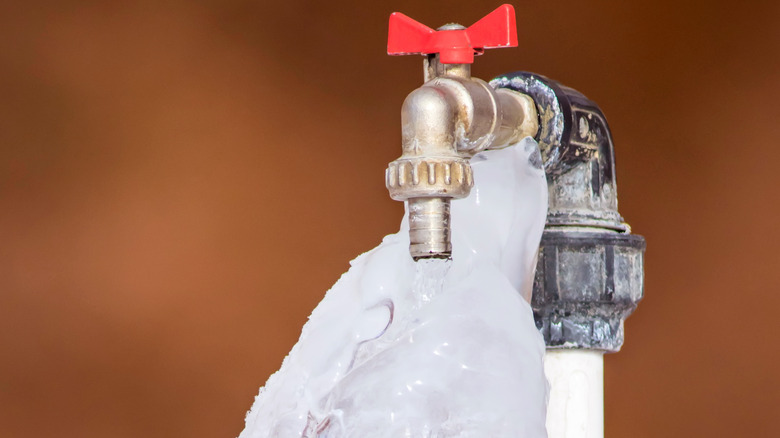Protecting Your Pipes from Freezing: Best Tips
Protecting Your Pipes from Freezing: Best Tips
Blog Article
Nearly everybody maintains their own unique theory involving 6 Ways to Prevent Frozen Pipes.

Winter can wreak havoc on your plumbing, specifically by freezing pipelines. Below's exactly how to avoid it from happening and what to do if it does.
Intro
As temperature levels decrease, the danger of icy pipelines rises, possibly bring about costly repair services and water damages. Comprehending exactly how to avoid icy pipes is important for house owners in chilly environments.
Recognizing Frozen Pipes
What causes pipelines to ice up?
Pipes freeze when revealed to temperature levels listed below 32 ° F (0 ° C) for prolonged periods. As water inside the pipelines freezes, it expands, taxing the pipe walls and possibly causing them to break.
Dangers and damages
Icy pipes can bring about water system disruptions, property damages, and expensive repair services. Burst pipes can flooding homes and trigger extensive structural damage.
Indications of Frozen Water Lines
Recognizing icy pipelines early can stop them from breaking.
Just how to recognize icy pipelines
Seek lowered water circulation from faucets, uncommon odors or sounds from pipelines, and visible frost on exposed pipelines.
Avoidance Tips
Protecting susceptible pipelines
Cover pipelines in insulation sleeves or use heat tape to safeguard them from freezing temperatures. Focus on pipes in unheated or exterior areas of the home.
Heating techniques
Maintain indoor areas appropriately heated up, specifically locations with plumbing. Open cabinet doors to permit cozy air to flow around pipes under sinks.
Shielding Outside Pipes
Yard hoses and outside taps
Separate and drain pipes yard hose pipes before winter season. Mount frost-proof faucets or cover outside faucets with shielded caps.
What to Do If Your Pipes Freeze
Immediate actions to take
If you presume icy pipelines, maintain faucets available to soothe pressure as the ice thaws. Use a hairdryer or towels soaked in hot water to thaw pipelines gradually.
Long-Term Solutions
Architectural modifications
Take into consideration rerouting pipes away from exterior walls or unheated areas. Add extra insulation to attics, basements, and crawl spaces.
Upgrading insulation
Invest in top quality insulation for pipes, attic rooms, and walls. Proper insulation aids preserve constant temperatures and minimizes the danger of icy pipelines.
Final thought
Preventing frozen pipelines calls for proactive measures and fast responses. By understanding the reasons, indicators, and safety nets, property owners can secure their plumbing during cold weather.
5 Ways to Prevent Frozen Pipes
Drain Outdoor Faucets and Disconnect Hoses
First, close the shut-off valve that controls the flow of water in the pipe to your outdoor faucet. Then, head outside to disconnect and drain your hose and open the outdoor faucet to allow the water to completely drain out of the line. Turn off the faucet when done. Finally, head back to the shut-off valve and drain the remaining water inside the pipe into a bucket or container. Additionally, if you have a home irrigation system, you should consider hiring an expert to clear the system of water each year.
Insulate Pipes
One of the best and most cost-effective methods for preventing frozen water pipes is to wrap your pipes with insulation. This is especially important for areas in your home that aren’t exposed to heat, such as an attic. We suggest using foam sleeves, which can typically be found at your local hardware store.
Keep Heat Running at 65
Your pipes are located inside your walls, and the temperature there is much colder than the rest of the house. To prevent your pipes from freezing, The Insurance Information Institute suggests that you keep your home heated to at least 65 degrees, even when traveling. You may want to invest in smart devices that can keep an eye on the temperature in your home while you’re away.
Leave Water Dripping
Moving water — even a small trickle — can prevent ice from forming inside your pipes. When freezing temps are imminent, start a drip of water from all faucets that serve exposed pipes. Leaving a few faucets running will also help relieve pressure inside the pipes and help prevent a rupture if the water inside freezes.
Open Cupboard Doors
Warm your kitchen and bathroom pipes by opening cupboards and vanities. You should also leave your interior doors ajar to help warm air circulate evenly throughout your home.

We hope you enjoyed our article about Prevent Frozen Pipes . Thanks so much for taking the time to read through our post. Enjoyed our piece of writing? Please share it. Help others find it. We appreciate reading our article about How To Avoid Freezing Pipes.
Call Today Report this page